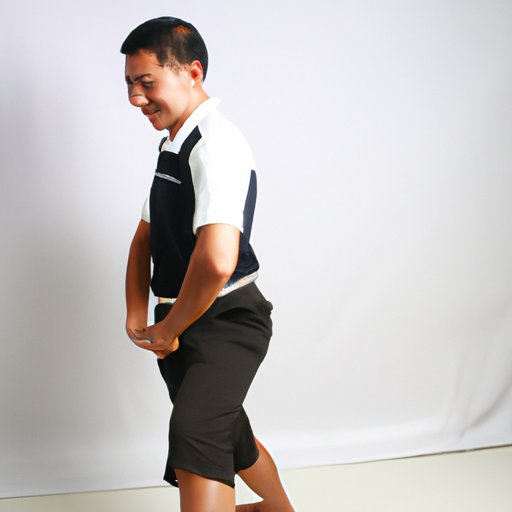
I. Introduction
Physical therapy degrees are essential if you want to pursue a career in physical therapy. This article will provide you with all of the information you need to know about the different types of physical therapy degrees, as well as the pros and cons of each degree. By the end of this guide, you should be able to determine which physical therapy degree is right for you.
II. The Essential Guide to Physical Therapy Degrees: What You Need to Know
Physical therapy is a healthcare profession that focuses on improving and restoring physical function and mobility. Physical therapists work with patients who have experienced injury, illness, or disability and help them improve their physical abilities, reduce pain, and prevent future injury. Physical therapy is a crucial aspect of healthcare, and physical therapists are in high demand across the United States.
There are different types of physical therapy degrees based on the educational level of the physical therapist.
III. Which Physical Therapy Degree Should You Pursue? A Comprehensive Comparison
There are four degrees in physical therapy: associate’s, bachelor’s, master’s, and doctoral degrees. Each degree has its own unique path and prerequisites. It’s important to compare each degree to determine which one is right for you.
Associate’s: This degree takes two years to complete and is geared towards individuals who want to enter the workforce as a physical therapy assistant (PTA).
Bachelor’s: This degree takes four years to complete and is for individuals who want to become physical therapy assistants or prepare for a graduate physical therapy program.
Master’s: This degree takes two to three years to complete and is for individuals who want to become licensed physical therapists.
Doctoral: This degree takes three years to complete and is for individuals who want advanced clinical practice skills and may be needed for some physical therapy specialties.
IV. The Pros and Cons of Each Physical Therapy Degree: Making an Informed Choice
Each degree comes with its own pros and cons. Understanding these differences can help you make an informed choice.
Associate’s Degree Pros
- It’s the quickest pathway to become a physical therapy assistant.
- It generally has lower tuition fees.
- It’s a good way to determine if you want to pursue a career in physical therapy without committing to a longer degree.
Associate’s Degree Cons
- The degree is limited, meaning you cannot practice as a physical therapist but as an assistant only.
- It may limit growth opportunities in the physical therapy field.
Bachelor’s Degree Pros
- It is more versatile than the associate’s degree offering PT aide jobs as well as some clinical jobs.
- It is highly recommendable to those pursuing PT education.
Bachelor’s Degree Cons
- It could be more expensive than the associate’s degree.
- You still cannot practice as a PT with this degree only; you need further professional education.
Master’s Degree Pros
- You can start practicing as a licensed physical therapist once you complete this degree.
- You can specialize in a particular area of physical therapy if you desire.
Master’s Degree Cons
- It could be quite expensive; therefore, financing options may become necessary.
- It requires rigorous practice beyond classroom lectures to complete this degree.
Doctoral Degree Pros
- You can specialize in a particular area of physical therapy.
- You can become a supervisor or a leader in your field.
Doctoral Degree Cons
- It is the most expensive of all the degrees.
- It is the longest of all the degree options.
- It may not be necessary or recommended for all physical therapy career paths.
V. From Associate’s to Doctoral: Exploring the Range of Physical Therapy Degrees Available
It’s important to understand the different degrees available in physical therapy to choose a pathway right for you. The associate’s degree is a shorter, less expensive option, while the doctoral degree offers in-depth knowledge and opportunities for specialization. When choosing a pathway, consider your career goals and financial status.
VI. Navigating the Educational Path to Becoming a Physical Therapist: A Step-by-Step Guide
The path to becoming a licensed physical therapist involves several steps. These include earning a degree, completing clinical work, and passing a licensure exam. It’s essential to have a clear understanding of each step before embarking on this educational journey.
VII. The Importance of Choosing the Right Physical Therapy Degree Program: How to Find Your Fit
Choosing the right physical therapy program is crucial. Since there are several physical therapy programs available, it’s essential to consider the factors that will support your learning and provide you with quality education. Consider factors such as program location, cost, and reputation.
VIII. Considering a Career in Physical Therapy? Here’s What You Need to Know About Degree Requirements.
Physical therapy has set degree requirements for individuals interested in pursuing careers as physical therapists. A master’s degree is the minimum education requirement to practice as a licensed physical therapist, while some specializations may require doctoral-level education for clinical practice.
IX. Conclusion
Physical therapy is essential for numerous health-related conditions and injuries. Pursuing a degree in physical therapy allows you to enter the healthcare industry and have a positive impact on people’s lives. Choose the degree pathway that aligns with your career aspirations and be prepared to work hard to achieve your goals.





